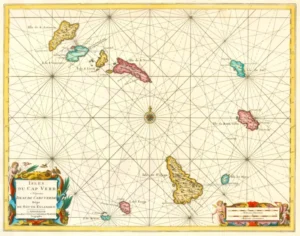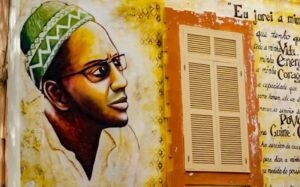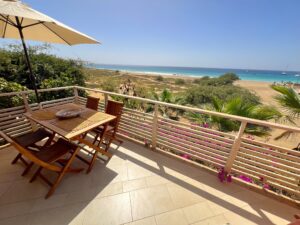Settlement and colonial times
The islands were discovered in 1456 by European sailors, the Portuguese crown took over the islands soon after and settled on Santiago in 1461, where they founded Cidade da Ribeira Grande (later known as Cidade Velha). Cape Verde became the first European overseas colony.
Ribeira Grande quickly became a prosperous seaport, slaves from West Africa for the sugarcane and cotton plantations became the most important “commodity”. After the discovery of America, Cidade da Ribeira Grande became the hub for the transatlantic slave trade; Portugal quickly became one of the richest countries of the former world.
However, this wealth decreased dramatically when Spain claimed the Portuguese throne in 1580 and ruled Portugal for the next 60 years.
Increasing attacks by pirates and buccaneers as well as devastating famines further worsened the situation. Only at the end of the 18th century, with the expansion of the trade of Cape Verdean goods (textiles, coffee, salt, etc.) did the country enter another period of growth and prosperity.
However, during the Napoleonic wars of the early 19th century, the colony was again neglected; Brazil became increasingly important for Portugal.
Due to the shifting influence amongst the European powers, England started to play an increasingly important role and Portugal became dependent on England.
Only in 1878 was the slave trade finally terminated.


